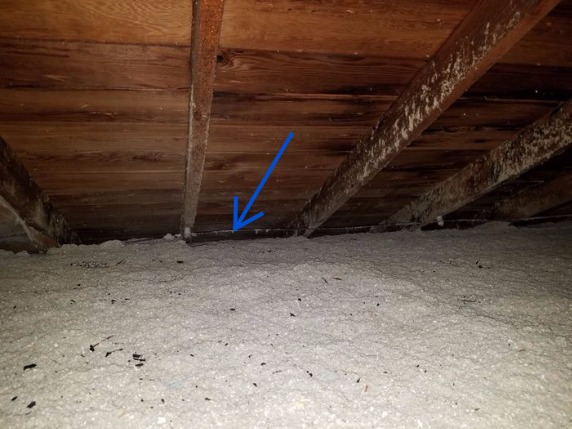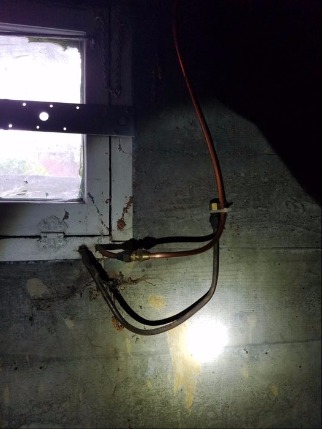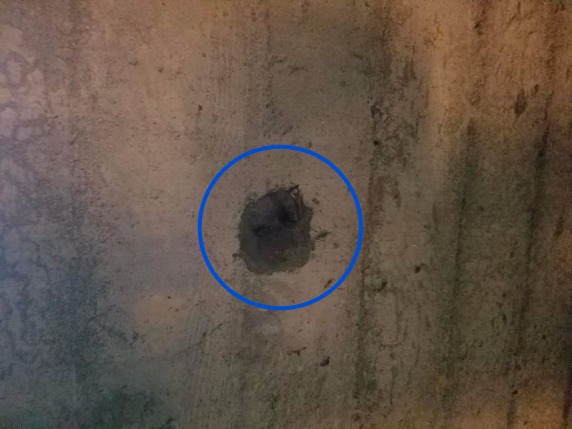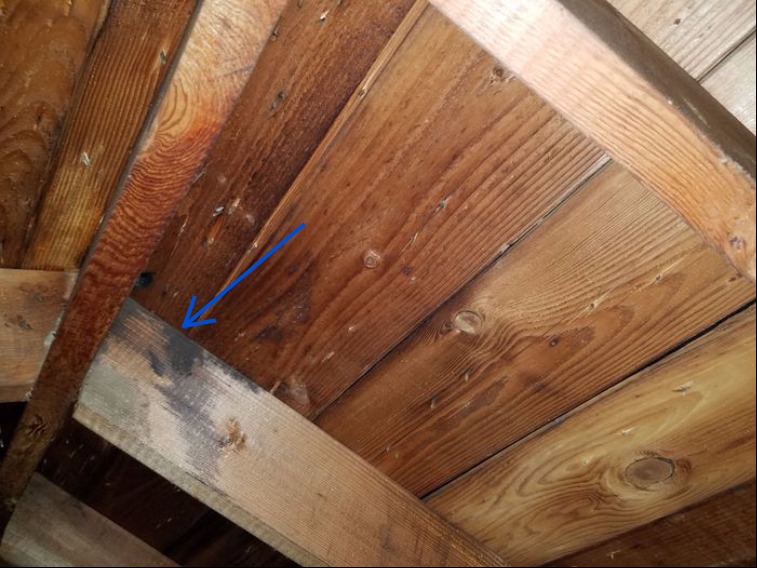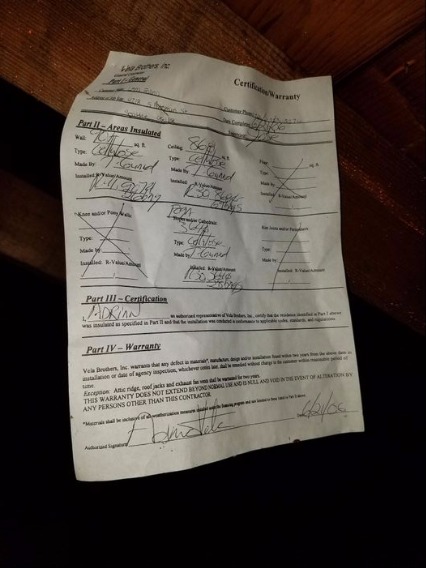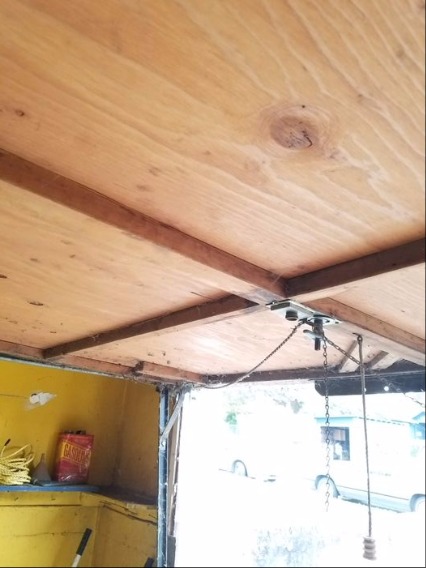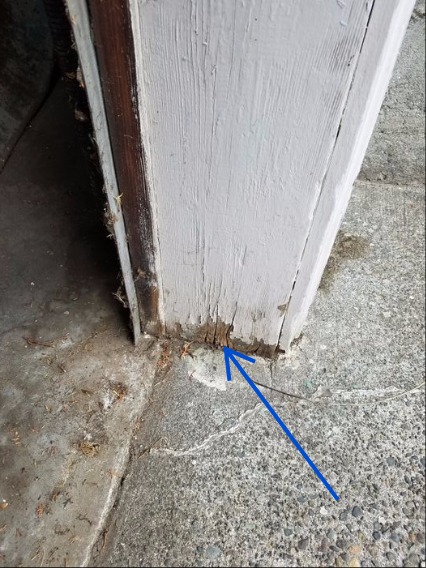The Scope and Purpose of a Home Inspection
Purchasing property involves risk
The purpose of a home inspection is to help reduce the risk associated with the purchase of a structure by providing a professional opinion about the overall condition of the structure. A home inspection is a limited visual inspection and it cannot eliminate this risk. Some homes present more risks than others. We cannot control this, but we try to help educate you about what we don’t know during the inspection process. This is more difficult to convey in a report and one of many reasons why we recommend that you attend the inspection.
A home inspection is not an insurance policy
This report does not substitute for or serve as a warranty or guarantee of any kind. Home warranties can be purchased separately from insuring firms that provide this service.
A home inspection is visual and not destructive
The descriptions and observations in this report are based on a visual inspection of the structure. We inspect the aspects of the structure that can be viewed without dismantling, damaging or disfiguring the structure and without moving furniture and interior furnishings. Areas that are concealed, hidden or inaccessible to view are not covered by this inspection. Some systems cannot be tested during this inspection as testing risks damaging the building. For example, overflow drains on bathtubs are generally not tested because if they were found to be leaking they could damage the finishes below. Our procedures involve non-invasive investigation and non-destructive testing which will limit the scope of the inspection.
This is not an inspection for code compliance
This inspection and report are not intended for city / local code compliance. During the construction process structures are inspected for code compliance by municipal inspectors. Framing is open at this time and conditions can be fully viewed. Framing is not open during inspections of finished homes, and this limits the inspection. All houses fall out of code compliance shortly after they are built, as the codes continually change. National codes are augmented at least every three years for all of the varying disciplines. Municipalities can choose to adopt and phase in sections of the codes on their own timetables. There are generally no requirements to bring older homes into compliance unless substantial renovation is being done.
This is just our opinion
Construction techniques and standards vary. There is no one way to build a house or install a system in a house. The observations in this report are the opinions of the home inspector. Other inspectors and contractors are likely to have some differing opinions. You are welcome to seek opinions from other professionals.
The scope of this inspection
This inspection will include the following systems: exterior, roof, structure, drainage, foundation, attic, interior, plumbing, electrical and heating. The evaluation will be based on limited observations that are primarily visual and non-invasive. This inspection and report are not intended to be technically exhaustive.For more about the scope of a home inspection see: ASHI National Standards at http://www.aareihome.com/standards.pdf or Washington State Home Inspection Standards at http://app.leg.wa.gov/RCW/default.aspx?cite=18.280.030
Your expectations
The overall goal of a home inspection is to help ensure that your expectations are appropriate with the house you are proposing to buy. To this end we assist with discovery by showing and documenting observations during the home inspection. This should not be mistaken for a technically exhaustive inspection designed to uncover every defect with a building. Such inspections are available but they are generally cost-prohibitive to most homebuyers.
Your participation is requested
Your presence is requested during this inspection. A written report will not substitute for all the possible information that can be conveyed verbally by a shared visual observation of the conditions of the property.
How to Read This Report
Getting the Information to You
This report is designed to deliver important and technical information in a way that is easy for anyone to access and understand. If you are in a hurry, you can take a “Quick Look” at our summary page and quickly get critical information for important decision making. However, we strongly recommend that you take the time to read the full Report, which includes digital photographs, captions, diagrams, videos and hot links to additional information.
The best way to get the layers of information that are presented in this report is to read your report online. This will allow all you to expand your learning about your house. You will notice some words or series of words highlighted in blue and underlined – clicking on these will provide you with a link to additional information.
This report can also be printed on paper or to a PDF document.
Chapters and Sections
This report is divided into chapters that parcel the home into logical inspection components. Each chapter is broken into sections that relate to a specific system or component of the home. You can navigate between chapters with the click of a button on the left side margin.
Most sections will contain some descriptive information done in black font. Observation narrative, done in colored boxes, will be included if a system or component is found to be significantly deficient in some way or if we wish to provide helpful additional information about the system or the scope of our inspection. If a system or component of the home was deemed to be in satisfactory or serviceable condition, there may be no narrative observation comments in that section.
Observation Labels
All narrative observations are colored, numbered and labeled to help you find, refer to, and understand the severity of the observation. Observation colors and labels used in this report are:
- Major Concern:Repair items that may cost significant money to correct now or in the near future, or items that require immediate attention to prevent additional damage or eliminate safety hazards.
- RepairRepair and maintenance items noted during inspection. Please note that some repair items can be expensive to correct such as re-finishing hardwood floors, but are considered simply repair items due to their cosmetic nature.
- ImproveObservations that are not necessarily defects, but which could be improved for safety, efficiency, or reliability reasons.
- MonitorItems that should be watched to see if correction may be needed in the future.
- Due DiligenceObservation such as a buried oil tank that may require further investigation to determine the severity and / or urgency of repair.
- Future ProjectA repair that may be deferred for some time but should be on the radar for repair or replacement in the near future.
- EfficiencyDenotes observations that are needed to make the home more energy efficient as well as to bring the home up to modern insulation standards. This category typically includes windows and insulation. Other items, such as lighting and appliances, are not inspected for their energy status.
- Notes and LimitationsRefers to aside information and /or any comments elaborating on descriptions of systems in the home or limitations to the home inspection.
Further Evaluation
Whenever further evaluation of a system or component is recommended or whenever due diligence is recommended, this further evaluation or investigation should be done by at least one licensed professional and qualified contractor prior to closing as there is a chance of hidden costs or problems associated with the system or component in question.
Summary Page
The Summary Page is designed as a bulleted overview of all the observations noted during inspection. This helpful overview is not a substitution for reading the entire inspection report. The entire report must be read to get a complete understanding of this inspection report as the Summary Page does not include photographs or photo captions.
Moisture Meter Testing
Where moisture meter testing is indicated in this report a Aquant Protimeter Non-Invasive Moisture Meter POL5765 was used.
Quick Look
Major Concerns
- (E-1) Electrical:
An obsolete fused electric panel was noted. Updating to a modern circuit breaker panel is recommended. This type of circuit protection is generally obsolete, unsafe and difficult to add onto without full service equipment replacement.Consult a licensed electrician to evaluate and replace.
Repairs
- (E-2) Electrical:
This home still appears to employ older knob and tube style wiring. This is an old soldered style of wiring that would not meet today's standards. During testing today I noted un-grounded outlets as well as knob and tube circuits. I recommend consulting with a licensed electrician about ways to improve this system and take pressure off existing knob and tube. Installation of additional circuits and of arc fault protected breakers can help make the system safer and more reliable. Complete removal and replacement of all knob and tube is desirable but considerably more expensive and not always necessary. Many homes of this age in this area still employ at least some percentage of knob and tube wiring. You need to update to a level you feel comfortable with.
- (E-5) Electrical:
GFCI (Ground Fault Circuit Interruption) protection is recommended for the electrical receptacles in the following locations: kitchen countertops, bathrooms, exterior, unfinished garage and basement and laundry. GFCI's protect against electrocution by limiting the duration of an electrical shock. These are an important modern safety feature. Hire a licensed electrician to further evaluate and repair.
- (HCF-2) Heating, Cooling and Fireplaces:
Annual servicing of the heating system is recommended for safe and reliable heat. Records indicate that this furnace has not been serviced in the last year. The furnace was tested during inspection and was operational. Hire a licensed heating contractor to service and further evaluate the furnace.
- (P-6) Plumbing:
An open sewer configuration was noted in the basement at the laundry sink - be sure all sewer pipes are appropriately capped or venting outdoors above the roofline.
- (P-7) Plumbing:
The p-trap at the laundry sink is leaking slightly.
- (P-8) Plumbing:
The water heater is lacking seismic straps to prevent the unit from falling over in an earthquake.
- (P-12) Plumbing:
The faucet at the laundry sink leaks when in operation.
- (B-2) Bathroom:
There is a crack in the tub surround and the surround is not securely attached to the wall. This can allow water to enter the wall.
- (RA-3) Roof/Attic:
The gutters were mostly clean but are clogged with debris in some places and holding water. Clean the gutters and implement tune-up repairs to insure they are clear of obstructions, well fastened, leak free and sloped to drain.
- (EG-3) Exterior/Garage:
I recommend additional inspection of the masonry chimney by a qualified mason. Implement repairs and cleaning as recommended to insure reliable performance. During inspection I noted:
-Spalling brick. This indicates that water is likely getting into the brick and that the wrong type of mortar was used for re-pointing. If this condition continues un-checked, it can cause structural failure of the brick / masonry.
-Organic growth. This can be bad for the chimney and trap water in the masonry and hasten deterioration of brick and mortar.
-Repairs with caulking rather than mortar. Failing mortar needs to be tuck-pointed rather than sealed with caulking.
-No liner was noted for the north flue. A flue liner is needed when a gas appliance is venting into an unlined masonry chimney on an exterior wall.
-No rain cap on the north flue.
- (EG-5) Exterior/Garage:
A small breach was found in the garage firewall where holes were made for blown-in insulation.. This should be repaired to complete the firewall. Holes and openings should be sealed with mud or high temperature caulking. Openings with doors should employ fire-rated doors.
- (EG-6) Exterior/Garage:
The door between the house and the garage is not a fire rated door. This should be updated to a modern fire rated door for improved safety.
- (G-6) Grounds:
The railing up the front steps is not securely attached to the stairs. Add additional attachments to improve safety.
Improves
- (E-3) Electrical:
An inadequate number of electric receptacles were noted in the kitchen. You should never be more than 2 feet from an electric receptacle in a kitchen. Installation of additional receptacles is recommended.
- (E-4) Electrical:
The only electric outlet for the bathroom is in the light fixture. Install a GFCI protected outlet for the bathroom.
- (E-6) Electrical:
Most of the receptacles in the home are an older two wire system. Though there is nothing wrong with this configuration you may find it inconvenient in some areas, especially in offices and media areas. Discretionary improvements may be needed depending on your needs.
- (P-4) Plumbing:
The galvanized steel supply pipe in this home looks to be at the end of its useful service life. Poor functional flow was noted. Hire a licensed plumbing contractor to further evaluate and replace this supply pipe.
- (P-9) Plumbing:
The water heater may be approaching the end of it's service life. Most water heaters are expected to last 8-12 years. Consult with a licensed plumber to evaluate and replace as necessary.
- (B-1) Bathroom:
The sink stopper was difficult to operate.
- (I-4) Interior:
Lighting in closets should be encased to protect the bulb and prevent hot bulbs from coming into contact with stored items.
- (I-5) Interior:
Sliding closet door in the northwest bedroom is off the rail.
- (I-6) Interior:
The ends of the hand rail should return into the wall to prevent clothing or accessories from catching on the end of the railing and creating a trip hazard.
- (I-8) Interior:
The door stop system for the home is incomplete. I recommend systematically installing door stops to protect doors and wall finishes.
- (RA-2) Roof/Attic:
Moss build-up was noted on the roof. This is bad for the roof covering and decking as it can trap moisture on the roof and can inhibit drainage off the roof. Moss removal is recommended. Products such as Tide are not recommended as the bleach in these products can deteriorate the shingles. Pressure washers should not be used to clean the moss as they can damage the shingles unless the moss has been killed prior to washing. Only very low pressure should be used to clean the roof of moss and chemicals should be used to kill the moss prior to removal. One product I have had success with in killing the moss is baking soda. Hire a professional roof cleaning service to clean and service this roof to insure proper control of roof runoff and proper drainage off the roof.
- (RA-6) Roof/Attic:
Some of the screens on the soffit vents are damaged and should be replaced to prevent access to the attic for animals.
- (EG-2) Exterior/Garage:
Soil in contact with this wooden window to the basement creates conditions conducive to wood destroying organisms.
- (G-4) Grounds:
All trees, branches and vegetation should be pruned at least six feet away from the house to eliminate conducive pest conditions and rodent entry points.
- (G-5) Grounds:
To eliminate a condition conducive to wood destroying organisms, remove the wood pile that is stacked up near the home. Remove away from the home and insure it is stored in a dry place.
- (G-7) Grounds:
Consider adding a cap or cutting these post tops at an angle to shed water. Flat post tops allow water to more easily enter and prematurely deteriorate the wood.
Monitors
- (SB-1) Structure and Basement:
Staining and debris indicates past moisture intrusion. Dry at time of inspection. Hidden conditions may be present.
- (P-13) Plumbing:
A floor drain was noted in the basement. It is important to ensure these drains function properly to drain any water from the basement, prevent water from entering the basement, and prevent sewer gas from entering the home. Monitor to ensure drainage and no sewer smell.
- (B-3) Bathroom:
The vinyl flooring is lifting up and the trim is slighty damaged, revealing evidence of past water intrusion between the sink cabinet and tub. It is possible this is from water escaping the enclosure during baths or showers. However, this is also consistent with some of the staining in the basement that indicates past water intrusion. The water damage may be from prior to the installation of the newer surround. Monitor to ensure water is no longer escaping the tub enclosure.
- (B-4) Bathroom:
Painted wood trim in the tub enclosure is susceptible to failure due to the large amount of water exposure. Maintain and consider removal or replacement at some point in the future.
- (K-1) Kitchen:
Staining on the wall under the cold water supply indicates a past leak. Monitor to ensure this is not an active leak.
- (EG-1) Exterior/Garage:
The exterior paint and caulking seems to be in relatively good condition. Monitor to make sure caulking is intact and maintain in order to extend the life of the siding and prevent water intrusion.
- (G-1) Grounds:
The downspout discharge on the back patio may be inadequate or clogged. Staining indicates moisture may be spreading across the patio rather than draining away. Pooling water may enter the house or create slippery conditions on the patio. Hidden conditions may be present.
- (G-2) Grounds:
Surface drain near the garage door needs to be maintained to ensure prprer drainage so water will not enter the garage. Some signs of water damage are present on the garage door and trim.
- (G-3) Grounds:
Monitor the stairwell and drain to the garage to ensure water is not standing or seeping into the home. Remove organic growth in order to prevent stairs from becoming slippery. Railings should have returns to prevent catching.
Due Diligences
- (FSD-2) Fuel Storage and Distribution:
There is evidence of a buried tank that is no longer in use. Be sure to obtain a decommissioning statement for this tank. More information on buried oil tanks can be found by calling PLIA @ 800-822-3905 or going to http://www.plia.wa.gov/heating/insurance.htm.
- (I-2) Interior:
The tiles in the basement may contain asbestos and should be tested prior to removal. Testing for asbestos is beyond the scope of this inspection.
Future Projects
- (B-6) Bathroom:
Given the age and visible condition of this family bathroom, a cohesive update is recommended to insure reliable and safe performance.
- (K-2) Kitchen:
Overall, the kitchen finishes and appliances are old and in the last phase of their useful service life. While only minor repairs are needed at the moment, a complete kitchen remodel would be logical in the near term to update this kitchen. Urgency depends on desire for cosmetic appearance and reliability.
- (I-1) Interior:
The hardwood floors are scratched and the finish is wearing through in places. Hire a hardwood floor specialist to evaluate and refinish the floors. Options include: a complete sand and finish which, if there is enough material on the wood, can make the floors look new - or a less expensive option of just adding more finish and leaving many of the scratches and dings.
- (EG-4) Exterior/Garage:
The overhead garage door is an older style awning style door. These are generally less safe due to the way they tip open. This is also an old door. A logical improvement would be updating to an fold-up style overhead door and newer automatic opener with modern safety features.
Efficiencies
- (HCF-1) Heating, Cooling and Fireplaces:
Programmable thermostats would be a logical upgrade to improve the efficiency of this heating system. Programmable thermostats can save up to 10% on your heating bill when properly programmed to set heat back when you are not at home.
- (HCF-4) Heating, Cooling and Fireplaces:
For improved energy efficiency, install glass doors for the front of the fireplace to reduce heat loss during winter months. Be sure to keep the flue damper inside the firebox closed as well. Chimneys are very good at sucking heat out of your house and glass doors and flue dampers help to slow this heat loss.
- (I-9) Interior:
The large window in the living room has lost the seal that gives this double-pane window it's thermal efficiency. This also leads to fogging and condensation in between the panes. The broken seal can not be repaired. You will need to replace the broken portion of the window with new double-pane glass. You may not have to replace the entire window in order to make this repair. Hire a glazing specialist to further evaluate and repair/replace.
Notes
- (E-7) Electrical:
I did not find any exterior receptacles during inspection. You may want to add a few.
- (E-8) Electrical:
Smoke alarms should be in every sleeping room and adjacent area, basements, and habitable attic. Ideally all alarms are interconnected so one going off sets off all. Carbon monoxide alarms should be present outside all sleeping areas in homes with fuel-fired appliances or attached garages. Test alarms regularly to ensure functionality.
- (FSD-1) Fuel Storage and Distribution:
The oil tank in the side yard is an above ground tank. Above ground tanks are still eligible for the oil tank spill insurance provided through the PLIA (Pollution Liability Insurance Agency) spill insurance. As such, I recommend registering this tank for the spill insurance and inquiring with the seller to see if they have registered the tank to establish the history of coverage provided by this insurance. To register this tank, and for more information on oil tanks call PLIA @ 800-822-3905 or go to http://www.plia.wa.gov/heating/insurance.htm.
- (HCF-3) Heating, Cooling and Fireplaces:
If you are planning on using the fireplace, the flue should be cleaned and inspected by a licensed chimney sweep. Regular cleaning of the flue is recommended to insure safe operating condition.
- (P-1) Plumbing:
The cover to the water meter is cracked and the meter box is full of soil. Contact the city utility to replace the broken cover.
- (P-2) Plumbing:
The water supply and shut off are located in the south west corner of the garage.
- (P-3) Plumbing:
Water pressure tested at 72 psi on exterior hose bib.
- (P-5) Plumbing:
The sewer clean out is located in a closet in the basement.
- (P-10) Plumbing:
The water temperature was low at time of inspection - only 105 degrees. Check heater settings and possibly consult with a licensed technician to evaluate and improve performance.
- (P-11) Plumbing:
Updating the hose bibs to frost free style is recommended. In the meantime, be sure to winterize your hose bibs during cold weather to prevent from freezing.
- (B-5) Bathroom:
The bathtub no longer has a stopper. Have this repaired by a plumber as desired or you can use a rubber stopper.
- (I-3) Interior:
Due to the age of the home it is possible that lead paint is present. Testing for lead paint is beyond the scope of this inspection.
- (I-7) Interior:
The basement stair treads are narrow and would not meet modern safety standards. This could be a safety hazard / trip hazard. This may not be cost-effective to correct. Consult with a qualified general contractor about options to correct.
- (RA-1) Roof/Attic:
The roofing material on this building is architectural grade shingle. These are often rated as 25 or 30 years roofs. In practice they may last closer to 18-22 years depending on the steepness of the roof and the amount of exposure and quality of the fastening. The installation appears neat and professional. Inquire with the seller about any warranty information for this roof. Many professional roofing companies will offer limited workmanship warranties.
- (RA-4) Roof/Attic:
Some staining indicates past water intrusion.
- (RA-5) Roof/Attic:
Notice indicates insulation was installed in 2006. Insulation appears undisturbed.
Structure and Basement
Foundation
% of Foundation Not Visible 0%
Evidence of Seismic Protection None noted
Building Configuration Basement
Foundation Description Poured concrete
Floor, Wall and Ceiling Framing
Wall Framing Not visible
Wall Insulation Evidence of blown-in retrofit
Wall Sheathing Not visible
Floor Framing Partly visible, 2x8
Sub-Floor Material Shiplap
Ceiling Framing Not visible
Basement
Full, Garage under building
Basement Moisture
Some signs
Staining and debris indicates past moisture intrusion. Dry at time of inspection. Hidden conditions may be present.
Electrical
Service Equipment
Volts 120/240
Service Drop Overhead
Meter Base Amperage 200
Main Panel Amperage Listing not visible
Electric Service Amperage 200 amps
Main Electric Panel Location Basement
An obsolete fused electric panel was noted. Updating to a modern circuit breaker panel is recommended. This type of circuit protection is generally obsolete, unsafe and difficult to add onto without full service equipment replacement.Consult a licensed electrician to evaluate and replace.
Branch Wiring
Wire Material Copper
Wiring Method Non-metallic sheathed cable
This home still appears to employ older knob and tube style wiring. This is an old soldered style of wiring that would not meet today's standards. During testing today I noted un-grounded outlets as well as knob and tube circuits. I recommend consulting with a licensed electrician about ways to improve this system and take pressure off existing knob and tube. Installation of additional circuits and of arc fault protected breakers can help make the system safer and more reliable. Complete removal and replacement of all knob and tube is desirable but considerably more expensive and not always necessary. Many homes of this age in this area still employ at least some percentage of knob and tube wiring. You need to update to a level you feel comfortable with.
Receptacles and Fixtures
Inspection Method Random Testing
Outlets Two wire outlets
An inadequate number of electric receptacles were noted in the kitchen. You should never be more than 2 feet from an electric receptacle in a kitchen. Installation of additional receptacles is recommended.
The only electric outlet for the bathroom is in the light fixture. Install a GFCI protected outlet for the bathroom.
GFCI (Ground Fault Circuit Interruption) protection is recommended for the electrical receptacles in the following locations: kitchen countertops, bathrooms, exterior, unfinished garage and basement and laundry. GFCI's protect against electrocution by limiting the duration of an electrical shock. These are an important modern safety feature. Hire a licensed electrician to further evaluate and repair.
Most of the receptacles in the home are an older two wire system. Though there is nothing wrong with this configuration you may find it inconvenient in some areas, especially in offices and media areas. Discretionary improvements may be needed depending on your needs.
I did not find any exterior receptacles during inspection. You may want to add a few.
Smoke and CO Alarm Systems
Present, Non-standard
Smoke alarms should be in every sleeping room and adjacent area, basements, and habitable attic. Ideally all alarms are interconnected so one going off sets off all. Carbon monoxide alarms should be present outside all sleeping areas in homes with fuel-fired appliances or attached garages. Test alarms regularly to ensure functionality.
Grounding Electrode / Conductor
Could Not Confirm
Fuel Storage and Distribution
Oil Storage
Present
Storage Type Above ground tank, Below ground tank
Oil Tank Location One oil tank is above ground on the east side of the property. Another tank is in the ground in the backyard.
The oil tank in the side yard is an above ground tank. Above ground tanks are still eligible for the oil tank spill insurance provided through the PLIA (Pollution Liability Insurance Agency) spill insurance. As such, I recommend registering this tank for the spill insurance and inquiring with the seller to see if they have registered the tank to establish the history of coverage provided by this insurance. To register this tank, and for more information on oil tanks call PLIA @ 800-822-3905 or go to http://www.plia.wa.gov/heating/insurance.htm.
There is evidence of a buried tank that is no longer in use. Be sure to obtain a decommissioning statement for this tank. More information on buried oil tanks can be found by calling PLIA @ 800-822-3905 or going to http://www.plia.wa.gov/heating/insurance.htm.
Propane Storage
None noted
Gas Meter
None noted
Heating, Cooling and Fireplaces
Heating System
Energy Source Oil
Heating Method Forced air furnace
Manufacturer Armstrong
Age 8 years
Last Service Record 2012
Filtration System Disposable
Programmable thermostats would be a logical upgrade to improve the efficiency of this heating system. Programmable thermostats can save up to 10% on your heating bill when properly programmed to set heat back when you are not at home.
Annual servicing of the heating system is recommended for safe and reliable heat. Records indicate that this furnace has not been serviced in the last year. The furnace was tested during inspection and was operational. Hire a licensed heating contractor to service and further evaluate the furnace.
Cooling Systems / Heat Pumps
None Noted
Heating / Cooling Distribution Systems
Heat Source in Each Room Present
Distribution Method Ductwork
Additional Heat Sources
None noted
Gas Fireplaces
None noted
Solid Fuel Fireplaces
Present
Fireplace Types Masonry firebox
If you are planning on using the fireplace, the flue should be cleaned and inspected by a licensed chimney sweep. Regular cleaning of the flue is recommended to insure safe operating condition.
For improved energy efficiency, install glass doors for the front of the fireplace to reduce heat loss during winter months. Be sure to keep the flue damper inside the firebox closed as well. Chimneys are very good at sucking heat out of your house and glass doors and flue dampers help to slow this heat loss.
Plumbing
Water Service Supply
Pipe Material Copper
Well or Public Supply Public
Water Pressure 72 psi
Pressure Reducing Valve None noted
Main Water Shut-off Location Garage
The cover to the water meter is cracked and the meter box is full of soil. Contact the city utility to replace the broken cover.
The water supply and shut off are located in the south west corner of the garage.
Water pressure tested at 72 psi on exterior hose bib.
Distribution Pipe
Pipe Insulation Non-Standard
Supply Pipe Materials Galvanized steel
Functional Flow Marginal
The galvanized steel supply pipe in this home looks to be at the end of its useful service life. Poor functional flow was noted. Hire a licensed plumbing contractor to further evaluate and replace this supply pipe.
Waste Pipe and Discharge
Discharge Type Public sewer
Waste and Vent Pipe Materials Cast Iron
An open sewer configuration was noted in the basement at the laundry sink - be sure all sewer pipes are appropriately capped or venting outdoors above the roofline.
The p-trap at the laundry sink is leaking slightly.
Water Heater
System Type Tank
Manufacturer A.O.Smith
Water Temperature 105 degrees F
Size 50 gal
Age 16 years
Energy Source Electricity
Temperature Pressure Relief Value Present - Not Tested
The water heater is lacking seismic straps to prevent the unit from falling over in an earthquake.
The water heater may be approaching the end of it's service life. Most water heaters are expected to last 8-12 years. Consult with a licensed plumber to evaluate and replace as necessary.
The water temperature was low at time of inspection - only 105 degrees. Check heater settings and possibly consult with a licensed technician to evaluate and improve performance.
Exterior Hose Bibs
Operating
Updating the hose bibs to frost free style is recommended. In the meantime, be sure to winterize your hose bibs during cold weather to prevent from freezing.
Additional Sinks
Tested
The faucet at the laundry sink leaks when in operation.
Sewage Ejector Pumps
None noted
Sump Pumps and Drains
Floor Drain Present
Sump Pumps None noted
A floor drain was noted in the basement. It is important to ensure these drains function properly to drain any water from the basement, prevent water from entering the basement, and prevent sewer gas from entering the home. Monitor to ensure drainage and no sewer smell.
Washer
Not tested
Dryer
Not included
Power Source Electric
Duct to Exterior Ducted
Additional Plumbing
None noted
Bathroom
Sinks and Cabinets
Tested
Toilet
Tested
Bathtub / Shower
Tested
There is a crack in the tub surround and the surround is not securely attached to the wall. This can allow water to enter the wall.
The vinyl flooring is lifting up and the trim is slighty damaged, revealing evidence of past water intrusion between the sink cabinet and tub. It is possible this is from water escaping the enclosure during baths or showers. However, this is also consistent with some of the staining in the basement that indicates past water intrusion. The water damage may be from prior to the installation of the newer surround. Monitor to ensure water is no longer escaping the tub enclosure.
Painted wood trim in the tub enclosure is susceptible to failure due to the large amount of water exposure. Maintain and consider removal or replacement at some point in the future.
The bathtub no longer has a stopper. Have this repaired by a plumber as desired or you can use a rubber stopper.
Bathroom Ventilation
Type Fan and window
General Bath Condition
Standard
Given the age and visible condition of this family bathroom, a cohesive update is recommended to insure reliable and safe performance.
Kitchen
Sinks and Faucets
Tested
Staining on the wall under the cold water supply indicates a past leak. Monitor to ensure this is not an active leak.
Cabinets and Countertops
Countertop Material Plastic laminate
Cabinet Material Wood
Ventilation Method
Fan ducted to exterior
Appliances
Refrigerator Operating
Dishwasher None noted
Dishwasher Air Gap None noted
Range/ Oven /Cook-tops Electric
Disposer None noted
General Kitchen Condition
Standard
Overall, the kitchen finishes and appliances are old and in the last phase of their useful service life. While only minor repairs are needed at the moment, a complete kitchen remodel would be logical in the near term to update this kitchen. Urgency depends on desire for cosmetic appearance and reliability.
Interior
Floors
Floor Materials Hardwood, Plastic sheet goods, Vinly asbestos tiles
Floor Settlement None noted
The hardwood floors are scratched and the finish is wearing through in places. Hire a hardwood floor specialist to evaluate and refinish the floors. Options include: a complete sand and finish which, if there is enough material on the wood, can make the floors look new - or a less expensive option of just adding more finish and leaving many of the scratches and dings.
The tiles in the basement may contain asbestos and should be tested prior to removal. Testing for asbestos is beyond the scope of this inspection.
Walls, Ceilings and Closets
Wall and Ceiling Materials Plaster
Due to the age of the home it is possible that lead paint is present. Testing for lead paint is beyond the scope of this inspection.
Lighting in closets should be encased to protect the bulb and prevent hot bulbs from coming into contact with stored items.
Sliding closet door in the northwest bedroom is off the rail.
Stairs and Railings
Non-standard
The ends of the hand rail should return into the wall to prevent clothing or accessories from catching on the end of the railing and creating a trip hazard.
The basement stair treads are narrow and would not meet modern safety standards. This could be a safety hazard / trip hazard. This may not be cost-effective to correct. Consult with a qualified general contractor about options to correct.
Interior Doors
Hollow Core
The door stop system for the home is incomplete. I recommend systematically installing door stops to protect doors and wall finishes.
Windows
Window Glazing Single pane, Double pane
Interior Window Frame Vinyl
Window Styles Sliding, Double hung, Awning, Jalousie
The large window in the living room has lost the seal that gives this double-pane window it's thermal efficiency. This also leads to fogging and condensation in between the panes. The broken seal can not be repaired. You will need to replace the broken portion of the window with new double-pane glass. You may not have to replace the entire window in order to make this repair. Hire a glazing specialist to further evaluate and repair/replace.
Mechanical Ventilation
Bath Fan Ducting Ducted to exterior
Kitchen Fan Ducting Ducted to exterior
Roof/Attic
Roof Materials
Method of Roof Inspection Walked on roof
Roof Style Hip, Gable
Roof Materials Architectural grade composition shingle
Approximate Age of Roof 10-15 years
The roofing material on this building is architectural grade shingle. These are often rated as 25 or 30 years roofs. In practice they may last closer to 18-22 years depending on the steepness of the roof and the amount of exposure and quality of the fastening. The installation appears neat and professional. Inquire with the seller about any warranty information for this roof. Many professional roofing companies will offer limited workmanship warranties.
Moss build-up was noted on the roof. This is bad for the roof covering and decking as it can trap moisture on the roof and can inhibit drainage off the roof. Moss removal is recommended. Products such as Tide are not recommended as the bleach in these products can deteriorate the shingles. Pressure washers should not be used to clean the moss as they can damage the shingles unless the moss has been killed prior to washing. Only very low pressure should be used to clean the roof of moss and chemicals should be used to kill the moss prior to removal. One product I have had success with in killing the moss is baking soda. Hire a professional roof cleaning service to clean and service this roof to insure proper control of roof runoff and proper drainage off the roof.
Gutters and Downspouts
Aluminum
The gutters were mostly clean but are clogged with debris in some places and holding water. Clean the gutters and implement tune-up repairs to insure they are clear of obstructions, well fastened, leak free and sloped to drain.
Attic Access
Viewed at access
Roof Framing and Sheathing
Rafters 2x6
Sheathing Tongue and groove
Attic Insulation
Insulation Type Cellulose
Approximate Insulation R-Value on Attic Floor 30
Approximate Insulation R-Value on Attic Ceiling Not needed
Approximate Insulation R-Value on Attic Walls Not applicable
Notice indicates insulation was installed in 2006. Insulation appears undisturbed.
Attic and Roof Cavity Ventilation
Attic Ventilation Method Soffit vents, Roof jack vents
Some of the screens on the soffit vents are damaged and should be replaced to prevent access to the attic for animals.
Exterior/Garage
Siding and Trim
Trim Material Wood
Siding Material Cedar shingles
The exterior paint and caulking seems to be in relatively good condition. Monitor to make sure caulking is intact and maintain in order to extend the life of the siding and prevent water intrusion.
Eaves
Cedar
Exterior Doors
Solid core
Exterior Window Frames
Vinyl, Wood
Soil in contact with this wooden window to the basement creates conditions conducive to wood destroying organisms.
Decks and Balconies
None noted
Porches
None noted
Chimneys
Present
Chimney Material Masonry
Chimney Flue Liners None noted
I recommend additional inspection of the masonry chimney by a qualified mason. Implement repairs and cleaning as recommended to insure reliable performance. During inspection I noted:
-Spalling brick. This indicates that water is likely getting into the brick and that the wrong type of mortar was used for re-pointing. If this condition continues un-checked, it can cause structural failure of the brick / masonry.
-Organic growth. This can be bad for the chimney and trap water in the masonry and hasten deterioration of brick and mortar.
-Repairs with caulking rather than mortar. Failing mortar needs to be tuck-pointed rather than sealed with caulking.
-No liner was noted for the north flue. A flue liner is needed when a gas appliance is venting into an unlined masonry chimney on an exterior wall.
-No rain cap on the north flue.
Garage
Garage in basement below building
Automatic Garage Opener None noted
Garage Door Type Wood
The overhead garage door is an older style awning style door. These are generally less safe due to the way they tip open. This is also an old door. A logical improvement would be updating to an fold-up style overhead door and newer automatic opener with modern safety features.
A small breach was found in the garage firewall where holes were made for blown-in insulation.. This should be repaired to complete the firewall. Holes and openings should be sealed with mud or high temperature caulking. Openings with doors should employ fire-rated doors.
The door between the house and the garage is not a fire rated door. This should be updated to a modern fire rated door for improved safety.
Grounds
Drainage and Lot Location
Clearance to Grade Standard
Downspout Discharge Below grade
Lot Description Flat
The downspout discharge on the back patio may be inadequate or clogged. Staining indicates moisture may be spreading across the patio rather than draining away. Pooling water may enter the house or create slippery conditions on the patio. Hidden conditions may be present.
Driveways/Walkways/Flatwork
Driveway Concrete
Walkways Concrete
Patios Concrete
Surface drain near the garage door needs to be maintained to ensure prprer drainage so water will not enter the garage. Some signs of water damage are present on the garage door and trim.
Window and Stairwells
Present
Monitor the stairwell and drain to the garage to ensure water is not standing or seeping into the home. Remove organic growth in order to prevent stairs from becoming slippery. Railings should have returns to prevent catching.
Grounds, Trees and Vegetation
Trees/Vegetation too near building Yes
All trees, branches and vegetation should be pruned at least six feet away from the house to eliminate conducive pest conditions and rodent entry points.
To eliminate a condition conducive to wood destroying organisms, remove the wood pile that is stacked up near the home. Remove away from the home and insure it is stored in a dry place.
Retaining Walls
Present
Retaining Wall Material Concrete, Stone
Exterior Stairs
Standard
The railing up the front steps is not securely attached to the stairs. Add additional attachments to improve safety.
Consider adding a cap or cutting these post tops at an angle to shed water. Flat post tops allow water to more easily enter and prematurely deteriorate the wood.
Fences
Present
Carport, Outbuildings and Other
None noted
Receipt -- Single Family Inspection
| Complete Home Inspection with report | $450.00 |
| $450.00 | |
| PAID |
Ango Inspections, LLC
C/O Sam Drucker
1722 SW Cloverdale St.
Seattle, WA 98106
206-919-9083


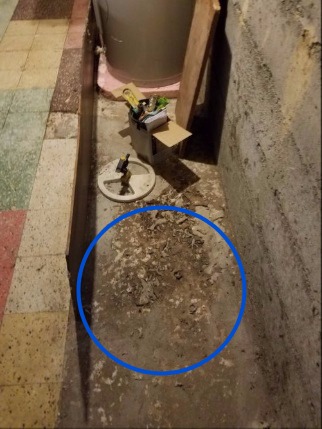
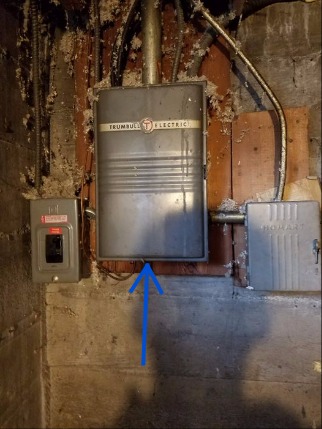
.jpg)
